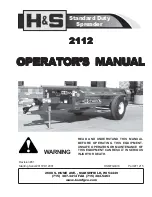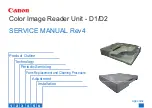
Lit. No. 76454/76455/76456, Rev. 03
11
February 15, 2020
DETERMINING VEHICLE PAYLOAD
1. Install the hopper spreader and optional
equipment according to the instructions.
2. Install or attach any other equipment that will be
on the vehicle while the hopper spreader will be in
use (step bumper, trailer hitch, snowplow, etc.). Fill
gas tanks.
3. Obtain the Gross Vehicle Weight Rating (GVWR)
from the UTV manufacturer.
4. With the occupants in the truck for normal hopper
spreader operation, weigh the vehicle to obtain
gross vehicle weight (GVW).
5. Subtract the GVW from the GVWR to determine
the available material payload.
6. Obtain the weight per cubic yard (lb/yd³) of the
desired material. Divide the weight into the
payload to determine the maximum volume of
material that can be carried.
7. Fill the hopper with the calculated volume of material.
Reweigh the vehicle with occupants and verify that
the GVW is less than the vehicle's ratings.
8. Repeat Steps 6
and 7
for each type of material.
LOADING
CAUTION
Never use wet materials or materials with
foreign debris with any of these spreaders.
These units are designed to handle dry, clean,
free flowing material.
This Owner's Manual covers vehicles that have been
recommended for carrying the hopper spreader. Please
see your local dealer for proper vehicle applications.
CAUTION
Read and adhere to manufacturer's
ice‑control material package
labeling, including Material Safety
Data Sheet requirements.
MATERIAL WEIGHTS
Density
Material
(lb/ft
3
)
(lb/yd
3
)
(kg/m
3
)
Salt
80
2160
1282
Sand
100
2700
1602
Material densities are approximate and are based on dry,
loose material. It is the responsibility of the operator to
know the weight of the material to be spread and the vehicle
carrying capacity.
WARNING
Overloading could result in an accident or
damage. Do not exceed GVWR of UTV.






































